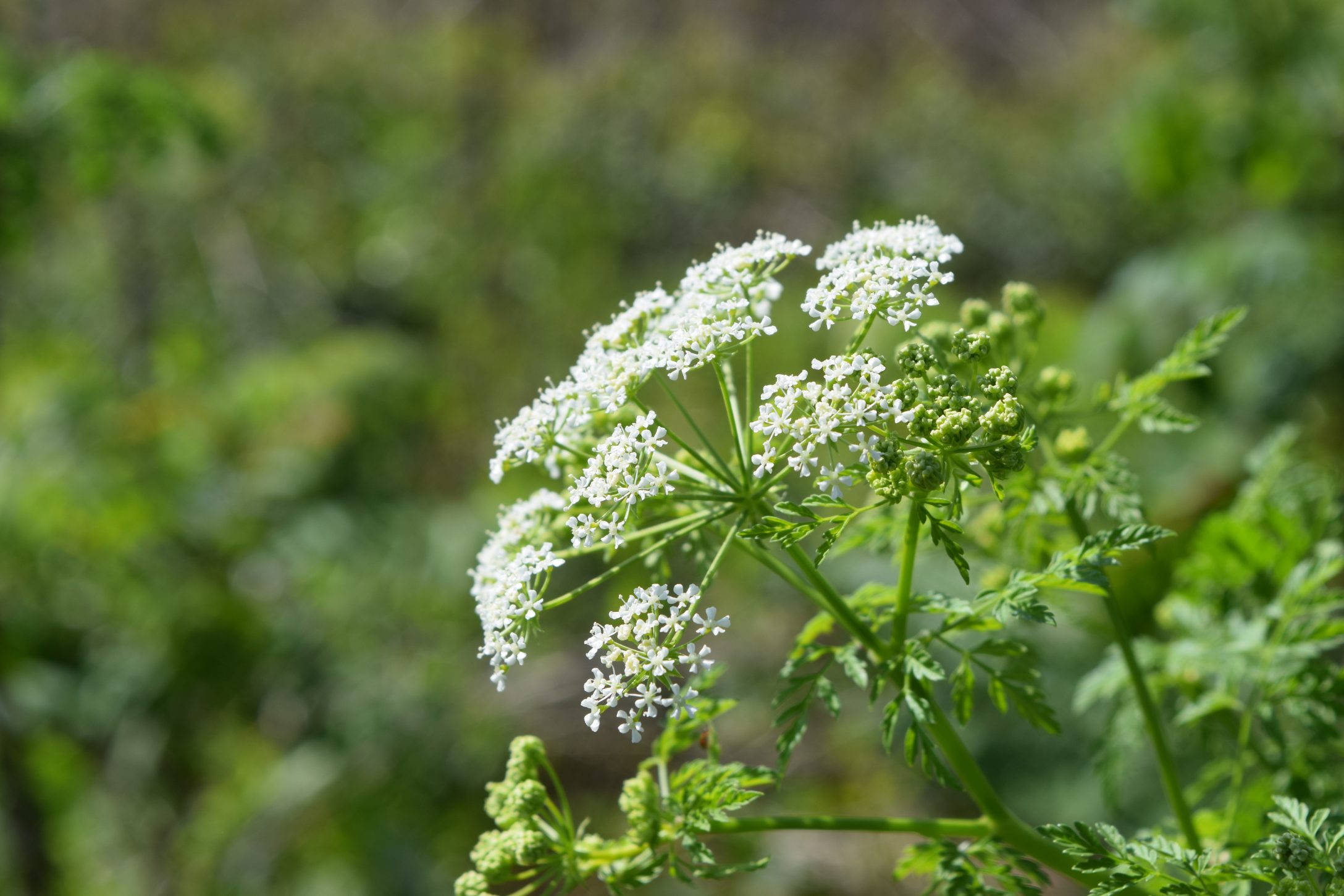When it came time to decide how he would die, Socrates chose hemlock tea. He was being executed, but it was customary in ancient Greece to choose how, so he opted for a brew made of a poisonous plant. Before and after he sipped the tea, he spoke with his associates; he chastised them for crying openly; he remembered that they owed a sacrifice to Asclepius, the god of health (“See to it and don’t forget,” he said, or Plato said he said), before his limbs lost feeling and he went cold to the touch.
This story always made hemlock seem like a good way to go, or at least a noble one. Drinking a brew made from a crushed plant, weighing your debts, then going limp and cold for the sake of your ideas—it doesn’t sound so bad, does it?
Speaking of good ways to go, hemlock also appears in Christian mythology: Jesus’ blood is supposed to have dripped into a hillside where hemlock was growing, and the plant was poisoned forever after. Redolent of pagan wisdom and messianic sacrifice, it’s also beloved of witches: in Macbeth, the three witches mix hemlock roots into their brew, along with the scales of dragons, wolves’ teeth, and baby fingers, and today, the plant is a perennial favorite on Wiccan Tumblrs: “The oil is good for anointing talismans to do destructive work,” one notes.
This is all good, but what, actually, is it?
There are several different types of hemlock, though they aren’t physically very similar. There’s a safe kind of hemlock—sometimes called eastern hemlock or Canadian hemlock—a sort of coniferous tree with fragrant leaves, which is the state tree of Pennsylvania. Its needles can be brewed into a tea or a soup, even if you don’t want to die a noble, philosophical death afterwards. Though I’ve never had it, online recipes suggest that it’s very bitter or that it tastes “like Christmas.” I suppose it can be both.
Poison hemlock is Conium maculatum, what Socrates drank, what Jesus’ blood poisoned, and what witches mix to make magic. But it’s also a real, live, normal poisonous plant that grows all over the world. It kills livestock and sometimes people, not because of philosophy, occult grievances, or the burden of original sin, but simply because a small bite can be fatal: the USDA estimates that even 100 grams of its leaves could kill a sheep. By most accounts, those sheep don’t die as calmly as Socrates did. Death by hemlock involves convulsions and a kind of slow strangulation. The hemlock of myth feels almost like a photo negative of the hemlock in nature.
The plant looks a bit like outsized Queen Anne’s lace: small tufts of white flowers that grow in erect clusters on thick hollow stalks. It can grow up to eight feet tall, though normally it’s closer to two. It’s not seductively beautiful; nor is it ugly. There’s nothing about its appearance that marks it as poisonous to the untrained eye, though apparently it does have a foul smell. I’ve only knowingly seen it once in nature, though it’s quite possible I’ve missed it other times. I wouldn’t have recognized it at all, if my friend Christie (who knows much more about plants than I do) hadn’t shrieked when we were walking along the road at the end of a hike in the Catskills. She pointed to a scraggy-looking plant that was growing out of a ditch in the side of the road: “That’s hemlock!”
She seemed in awe of it; I thought, huh. I guess I was a little disappointed, or just not very interested.
Poisonous plants are not a main worry of urban Americans, or at least not one of mine. When I’m outside, I worry about poison ivy, maybe poison oak, but these are irritants, not killers. Poison ivy kind of preens its poison, in any case, with its glossy witchy leaves. I am often astounded to remember that there are innocuous-looking plants in the woods that would kill me if I took a bite. I have no idea what most of them look like.
Nature is sublime because of the ways its beauty and terror are intertwined. I know this, but because I’ve only lived in cities, I often forget it. I tend to think that plants are good, and chemicals are bad, and that if I’m going to be poisoned it will probably not be by a plant but by smog or plastic or any of the other toxins I consume in the course of normal city living. Plants are also romantic because we know them from stories: if I know about hemlock, it’s because I read about Socrates’ good death, or Jesus’, or stories about sorcery. And yet the chemical structure of poison hemlock is quite similar to nicotine; as the authors of “Common Poisonous Plants and Mushrooms of North America” observe, nicotine and poison hemlock “act similarly, producing initial stimulation followed by severe depression of the central nervous system.” I am familiar with that kind of experience. I hope I never get it from hemlock.
Sophie Haigney





